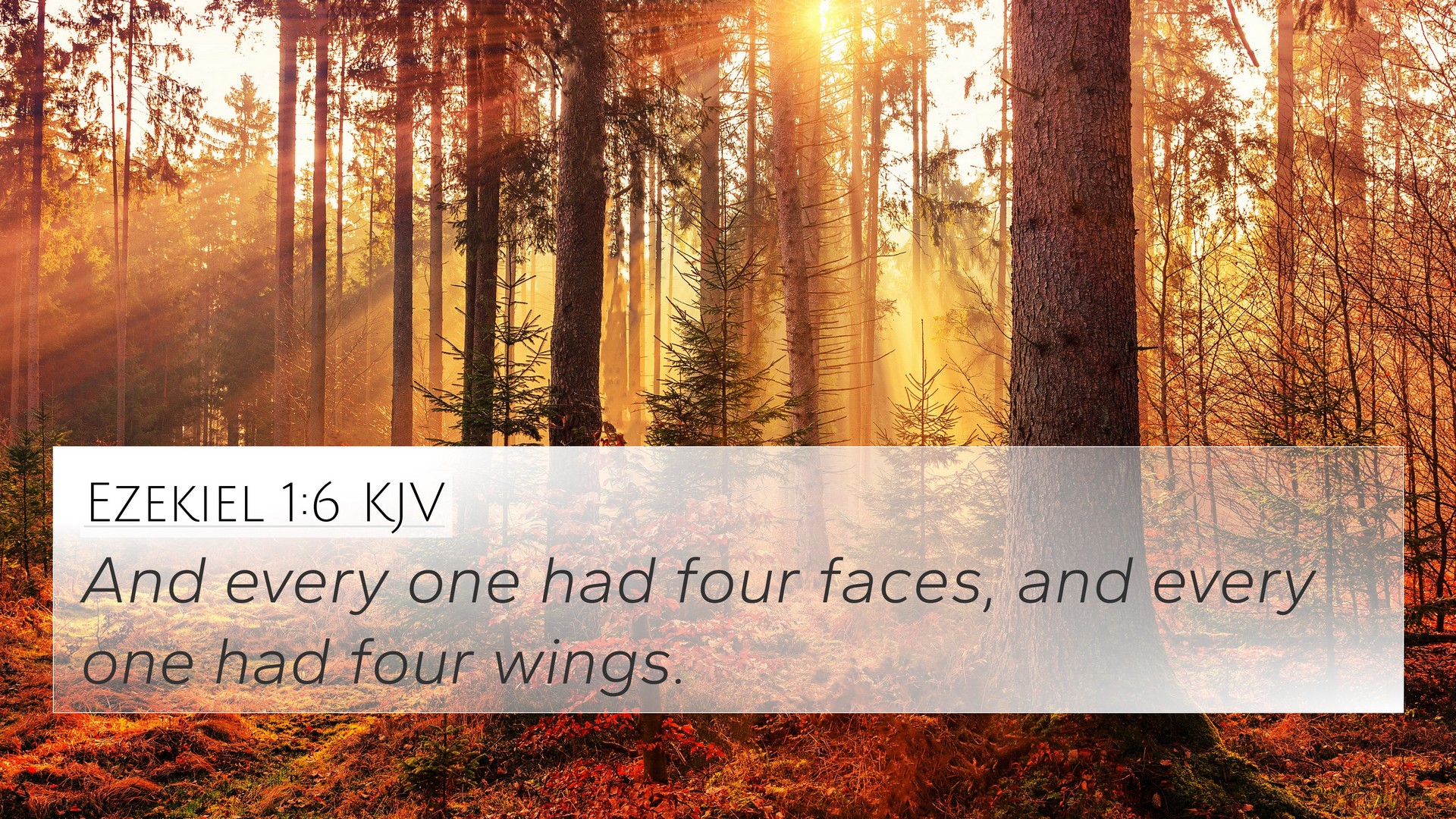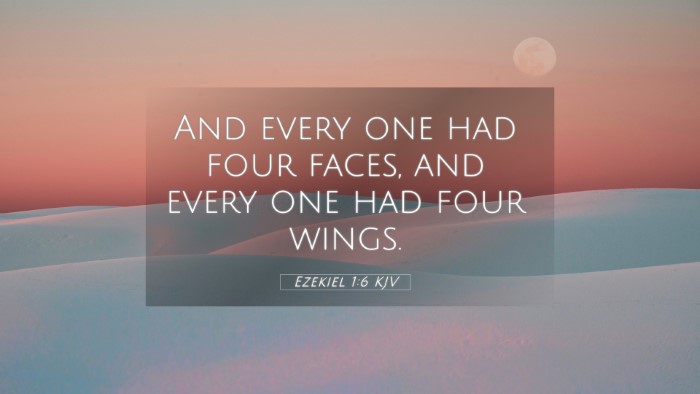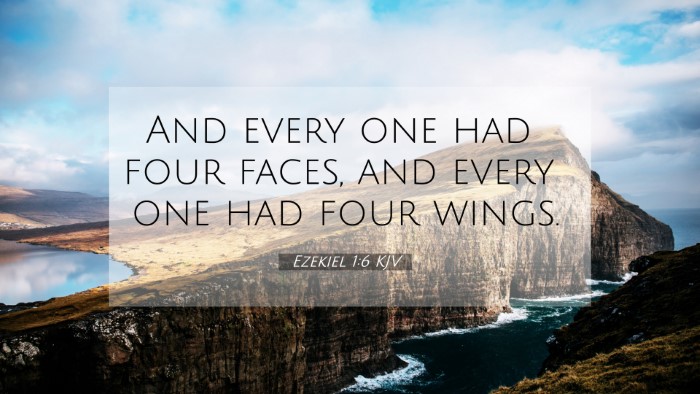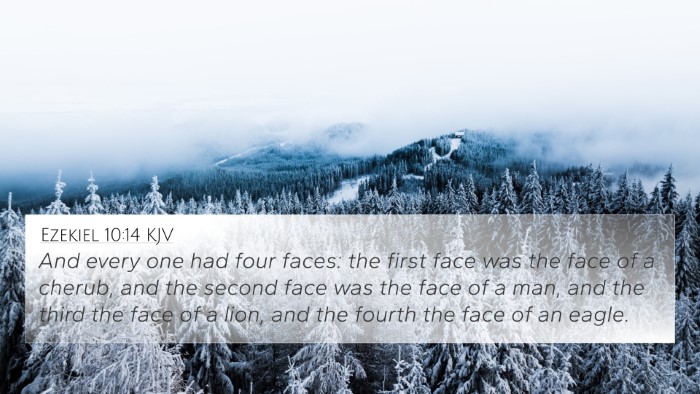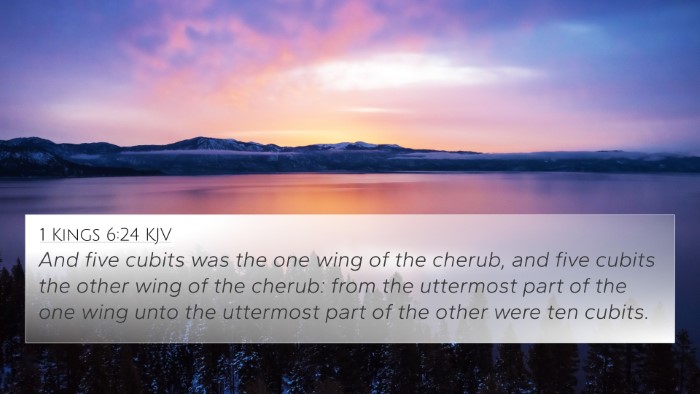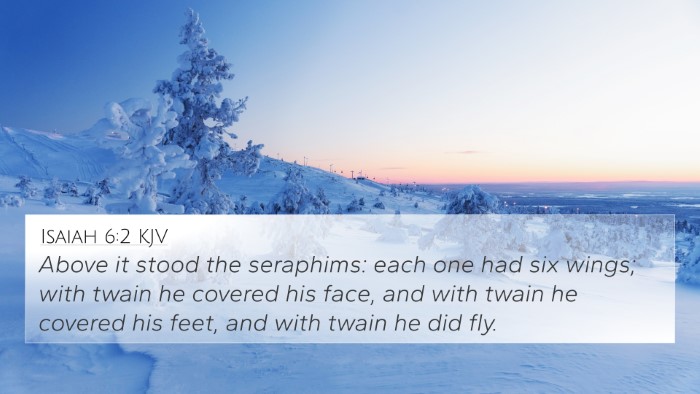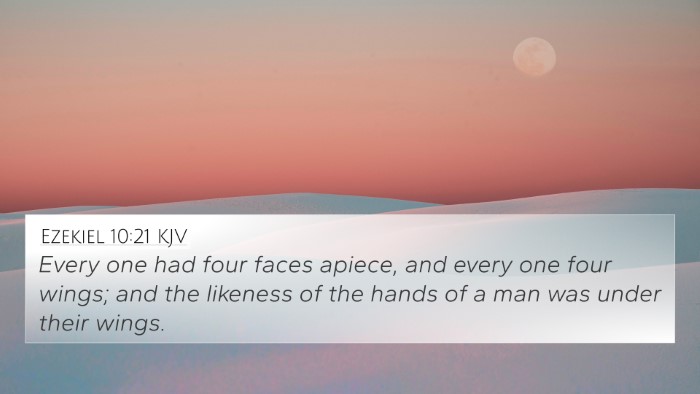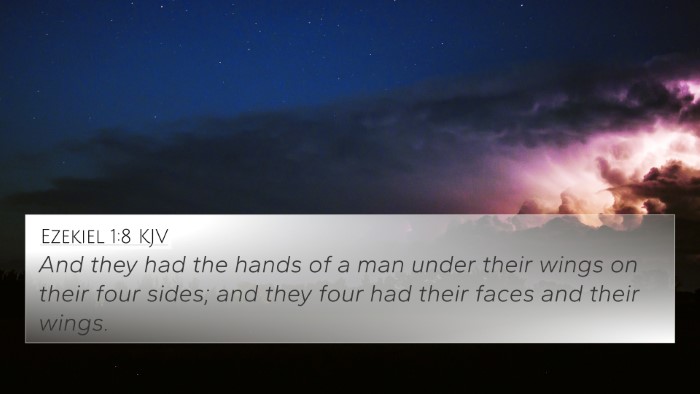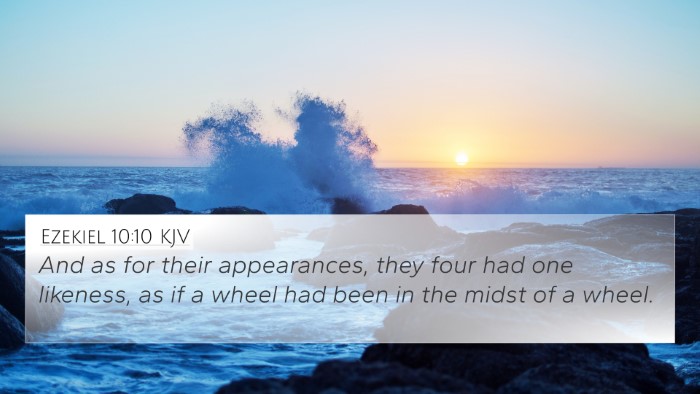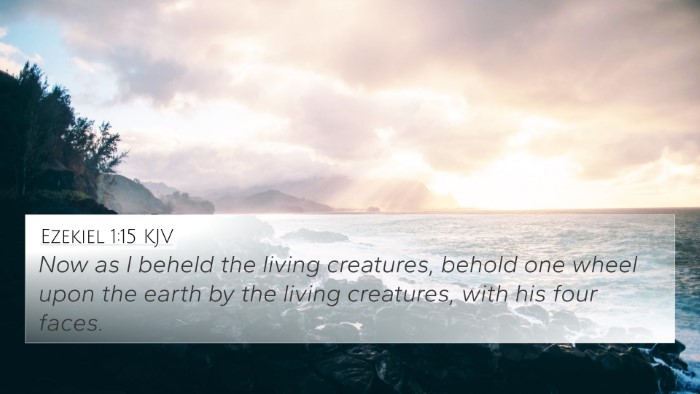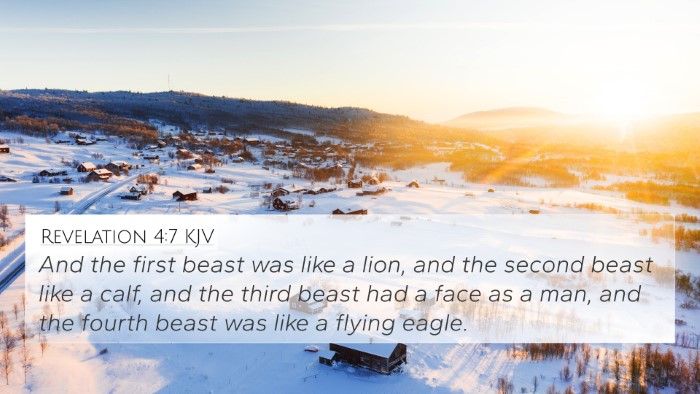Ezekiel 1:6 - Overview
Ezekiel 1:6 states: "And every one had four faces, and every one had four wings." This verse is part of Ezekiel's vision of the divine chariot and serves to illustrate the grandeur and complexity of God's celestial beings. The number four in biblical literature often symbolizes universality and completeness, which in this context represents the all-encompassing nature of God's creation and authority.
Commentary Insights
- Matthew Henry's Commentary
Matthew Henry highlights that the four faces signify the various aspects of God's creation, suggesting that the creatures are representations of different functions and purposes. The four wings indicate their readiness and ability to serve God swiftly and efficiently, underscoring the idea of obedience to divine command.
- Albert Barnes' Notes
Albert Barnes emphasizes the symbolic nature of these creatures, relating them to various aspects of God's creation – man, lion, ox, and eagle. Each face can be interpreted as representing human intellect, strength, service, and spiritual insight, respectively. This aligns with the overarching theme of God's sovereignty over all creation.
- Adam Clarke's Commentary
According to Adam Clarke, the imagery of having four faces and four wings reflects the complexity and multifaceted nature of God's purposes. Clarke points out that the four faces allow the creatures to behold all directions without turning, symbolizing God’s omniscience and ever-present nature.
Connections with Other Scriptures
To understand Ezekiel 1:6 in a broader biblical context, we can identify several cross-references that enhance its interpretation:
- Isaiah 6:2 - "Above it stood the seraphims: each one had six wings..."
This passage includes a heavenly creature's wings, echoing the celestial theme in Ezekiel.
- Revelation 4:6-8 - "And before the throne there was a sea of glass like unto crystal: and in the midst of the throne, and round about the throne, were four beasts full of eyes..."
This section describes four living creatures which parallel the four faces in Ezekiel.
- Genesis 1:26 - "And God said, Let us make man in our image, after our likeness..."
This reference illustrates humanity's created nature in God's likeness, reflecting the multifaceted aspects of the divine.
- Psalms 139:2 - "Thou knowest my downsitting and mine uprising, thou understandest my thought afar off."
This verse emphasizes God's omniscience, mirroring the comprehensive awareness depicted in Ezekiel's vision.
- Ezekiel 10:12 - "And their whole body, and their backs, and their hands, and their wings, were full of eyes round about..."
This continuation of Ezekiel's vision reinforces the imagery of divine beings filled with awareness.
- Acts 7:55-56 - "But he, being full of the Holy Ghost, looked up steadfastly into heaven, and saw the glory of God, and Jesus standing on the right hand of God..."
This evokes a vision of heavenly glory akin to that seen by Ezekiel.
- Hebrews 1:14 - "Are they not all ministering spirits, sent forth to minister for them who shall be heirs of salvation?"
This highlights the functional aspect of angels, akin to the operational readiness of the creatures in Ezekiel.
Thematic Connections
The themes presented in Ezekiel 1:6 can be further explored through comparative Bible verse analysis, connecting with motifs of divine authority, room for the miraculous, and the interface of heaven and earth.
Exploring Bible Cross-Referencing
Using tools for Bible cross-referencing such as a Bible concordance, one can easily navigate connections between this verse and others. Understanding the inter-Biblical dialogue allows for richer comprehension and contemplation of scripture as believers reflect upon God's nature and purpose.
Conclusion
In summary, Ezekiel 1:6 presents a vivid and symbolic depiction of heavenly creatures that speak to God's sovereignty, omnipresence, and the multifaceted nature of His creation. By utilizing a comprehensive Bible cross-reference guide, readers can deepen their understanding and engage with scripture in a meaningful way.
